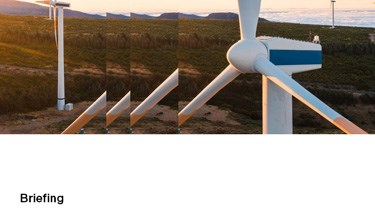What does the Foreign Subsidy Regulation mean for M&A transactions?
Practitioners and EU officials alike seem to be in agreement that the Foreign Subsidy Regulation (Regulation (EU) 2022/2560; “FSR”), which entered into force on 12 January 2023 (see our News Alert here), will have a significant effect on M&A deals. The new notification tool for transactions introduced in Articles 19 to 26 of the FSR has the potential to impose major bureaucratic burdens on deal parties by requiring them, if certain thresholds are exceeded, to notify certain transactions and to submit large amounts of information and data on financial contributions from non-EU countries to the European Commission (the “Commission”). As is the case in merger control proceedings, a merger may not be closed until the Commission has given its approval under the FSR (“standstill obligation”, which also applies to the granting of EU State aid). The notification and standstill obligations apply to concentrations in relation to which signing takes place on or after 12 July 2023.
In which cases does the new notification tool apply?
According to Article 20(3) of the FSR, the notification tool applies to transactions where the following two thresholds are met by the parties to a concentration:
|
Turnover threshold |
Financial contribution threshold |
|
“at least one of the merging undertakings, the acquired undertaking or the joint venture is established in the Union and generates an aggregate turnover in the Union of at least EUR 500 million” |
“the […] undertakings were granted combined aggregate financial contributions of more than EUR 50 million from third countries in the three years preceding the conclusion of the agreement, the announcement of the public bid, or the acquisition of a controlling interest”
|
The turnover threshold is meant to ensure that the FSR will only apply to large M&A deals. However, recent discussions and data suggest that the Commission’s initial expectation of 26 to 38 notifiable transactions per year will likely be exceeded (significantly) in practice (an expectation based on historical data in merger control cases; see the Commission’s Impact Assessment of 5 May 2021, pp. 51 et seq.). In addition, the Commission will be able to request ad-hoc notifications for smaller concentrations if it suspects the existence of distortive foreign subsidies.
We note that the threshold for financial contributions is set at a relatively low level. First, it applies to financial contributions within three years prior to the signing of the transaction. Second, the term “financial contribution” (to be differentiated from the term “foreign subsidies” for which additional conditions apply) is defined very broadly in the FSR. It encompasses not only the transfer of funds and liabilities but also the foregoing of revenue otherwise due and even the provision as well as purchase of goods and services.
Hence, even minor transactions, such as an electricity bill or sale of office supplies to a public entity can technically fall under the definition of a financial contribution. Therefore, in particular those companies that regularly enter into contracts with non-EU countries (including private entities whose actions can be attributed to such a third country) for the provision or purchase of goods and services may very quickly exceed the threshold of EUR 50 million over three years.
The Commission has the power to prohibit the completion of a subsidised concentration. If there is a breach of the notification or the standstill obligation, the Commission may impose fines of up to 10% of a company’s annual aggregated turnover.
What does a notification entail?
If the thresholds are met, the concentration as well as the financial contributions received in the three years prior to the transaction will have to be notified by the undertakings concerned (in the case of a merger or the acquisition of joint control, jointly by the parties; in all other cases, by the person or undertaking acquiring control).
As is the case with the merger control notification (Form CO), the notification will very likely require a significant amount of information and data. While the precise content of a notification will only be known soon after the Commission’s publication of the Implementing Regulation in the coming weeks, it is clear that, depending on the size of the undertakings concerned and the nature of their business, thousands of data points will have to be reported to the Commission. It follows that the thorough and careful preparation of such notification will take time. This should be duly taken into account in the overall transaction process.
How does the notification and clearance regime affect deal timing?
As regards the waiting period following a complete notification, the Commission will have 25 working days to assess whether the notified financial contributions constitute foreign subsidies and whether they risk distorting the internal market (Phase I). If in Phase I the Commission is unable to find that the criteria for foreign subsidies are not met or a distortion can be excluded, it will carry out an in-depth review of potential distortions of the internal market in Phase II that can take a further 90 working days (extendable by 15 working days).
What does the Commission assess?
The Commission will assess whether there is a distortion in the internal market caused directly or indirectly by foreign subsidies. In this context, the Commission may apply a “balancing test”, through which the positive and negative effects of financial contributions from non-EU countries (which also qualify as foreign subsidies) will be weighed.
How can companies prepare for the new notification requirement?
The new notification tool will apply from 12 October 2023, but concerns all transactions signed as of 12 July 2023. Companies that are involved in larger M&A deals, and therefore potentially affected by the notification requirement, should prepare themselves accordingly.
- Companies should set up and maintain an internal database that enables them to identify and report (on a rolling basis from July 2020 onwards) all financial contributions received from non-EU countries as of July 2018. Once the notification tool applies, any delay in gathering this data will lead to a delay in the overall transaction.
- External counsel will be able to assist in determining which of these financial contributions will eventually be seen as foreign subsidies by referring to, in particular, relevant State aid law precedents and experience.
- The potential positive effects of financial contributions to be considered in the balancing test should be assessed prior to notification.
- Companies may want to monitor and report to the Commission transactions by their competitors that may have been influenced by foreign subsidies and were not notified to the Commission in advance.
The Commission has recently signalled that it is open to receiving suggestions on possible simplifications concerning the content of notifications in non-problematic cases. Companies may therefore want to consider areas where simplifications may be both necessary and possible from their perspective.
Lastly, the Implementing Regulation will be particularly helpful for understanding the scope and dimension of notifications and the process overall. In that regard, the Commission will soon publish a draft Implementing Regulation, which all stakeholders – such as the undertakings likely to be affected by the FSR – can comment on within four weeks. The final rules are expected to be finalised and adopted by mid-2023.
Well
informed
Subscribe to our newsletter now to stay up to date on the latest developments.
Subscribe now










